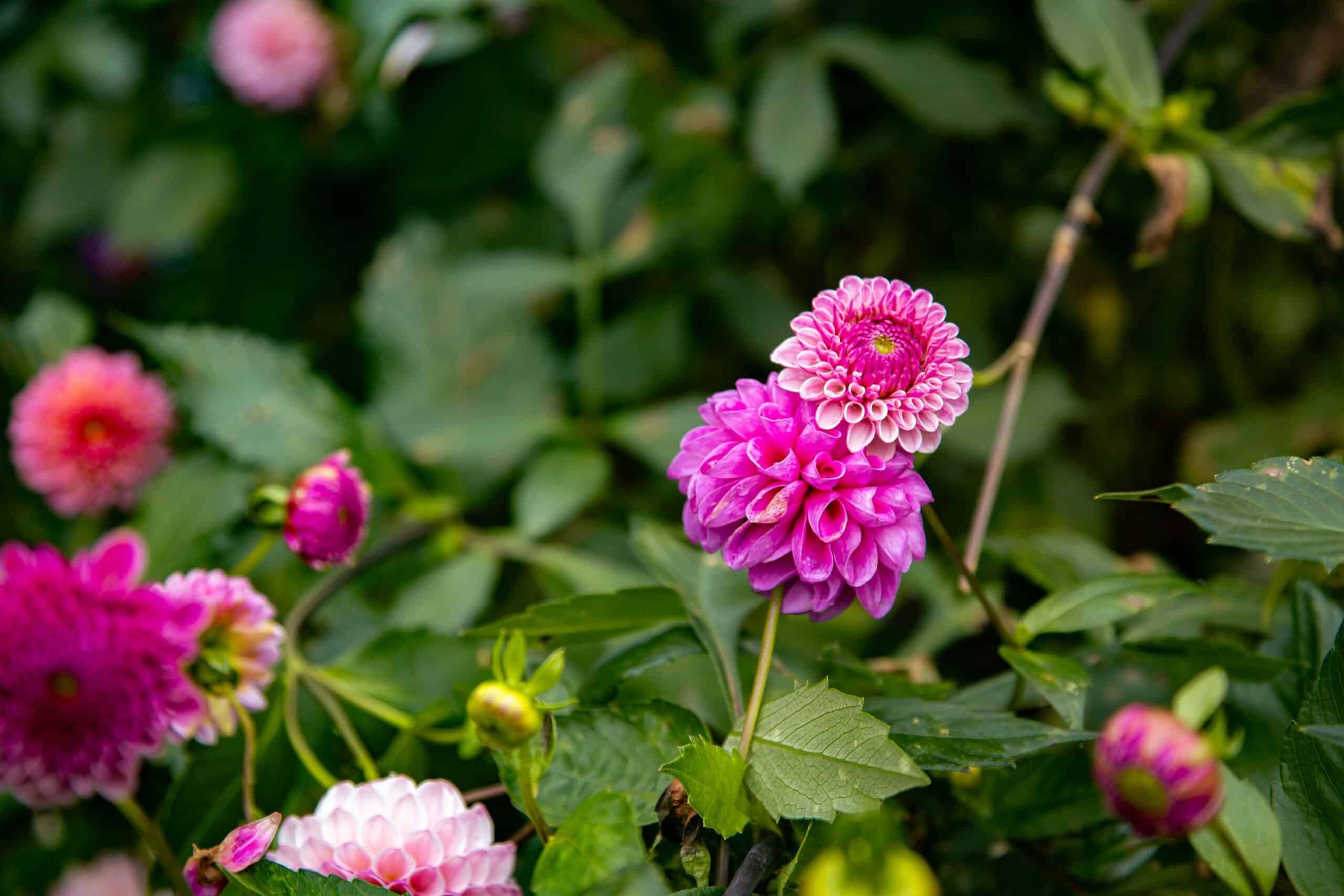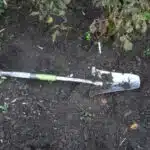The dahlia is an exquisite flower, with its bright and vibrant petals that bloom in a variety of colors and sizes. Its beauty can be seen even from a distance, as if it were an exotic bird beckoning you to come closer and admire its magnificence. But beyond the incredible display of color, there is so much more to learn about growing and caring for these stunning flowers.
At first glance, caring for dahlias may seem daunting. However, with the right knowledge and care, anyone can create a beautiful garden full of these unique blooms. This article will provide all the information you need to grow your own dahlias successfully – from picking the right type of soil to watering regularly and removing dead flowers. With this guide by your side, you’ll soon have a flourishing bed of dahlias that will last throughout the summer season.
Finally, taking care of dahlias gives gardeners not only an opportunity to cultivate a showstopping garden but also provides them with a sense of purpose in serving others by creating something beautiful for the world to enjoy. If you’re ready to start growing your very own dahlias, let’s get started!
What Are Dahlias?
Dahlias are a beautiful and versatile flower that can grow in many climates. They come in a variety of colors, sizes, and shapes, making them an eye-catching addition to any garden. With the right care and maintenance, these flowers will last for many years and provide your landscape with vibrant pops of color.
Let’s talk about how to get started growing dahlias. From choosing the right varieties for your climate to proper planting techniques, there’s lots to consider when caring for dahlias. First things first: understand the different types of dahlia plants available and decide which ones work best in your region. Then you should make sure you have the right soil type and drainage; this is key for successful blooms all season long! Finally, be sure to provide adequate water and fertilizer throughout the growing season so your dahlias can reach their full potential.
Now that you know what it takes to grow dahlias, let’s move on to selecting varieties that will thrive in your area. With a bit of research and preparation, you can find beautiful dahlia plants that fit perfectly into your landscaping plan. Have fun exploring all the possibilities – from single petal daisies to large dinner plate blooms – there’s a wide selection of stunning options for every taste!
Choosing Dahlia Varieties
Choosing the right dahlia variety can be an exciting adventure! With so many stunning and unique options to choose from, you’re sure to find one that will bring beauty and grace to your garden. But how do you know which type of dahlia is right for you? Here are a few tips to help you make the best decision.
First, consider where you live and what kind of climate you have. Some types of dahlias are better suited to warmer climates while others thrive in cooler temperatures. In addition, some varieties require more sun than others, so consider how much sunlight your location receives throughout the year.
Next, take a look at the size of the flowers each variety produces – from the smaller single-flowered types to the larger decorative varieties – and decide which ones will complement your garden’s design most effectively. Finally, think about whether or not you want a long-blooming season; some varieties keep their color for weeks on end while others may only last a few days.
By considering these factors carefully when selecting dahlias for your garden, you’ll be sure to pick out a variety that will make your outdoor space truly shine!
Planting Dahlias
Planting dahlias is like stepping into an artist’s canvas, with vibrant colors and shapes that will bring your garden to life. But before you get started, there are a few essential steps to ensure your plants’ success.
First off, it’s important to find the right spot for your dahlias. They love sunshine, so make sure they get at least six hours of direct sunlight daily. They also need good drainage—so avoid any areas where water might pool after a rain shower. Another factor to consider is the soil type; dahlias thrive in fertile soil that’s high in organic matter and well-drained.
Once you’ve found the perfect location and prepared the soil, it’s time to plant! The best time for planting is from late spring to early summer when temperatures are mild and there’s no danger of frost. Plant each tuber about 2–3 inches below the surface of the soil, with the eyes facing upward. Make sure to keep them 8–12 inches apart for enough space for their roots to grow! After planting, give them a deep watering and add some mulch around them for extra protection against heat and cold temperatures.
With these tips in mind, you’ll be on your way to growing beautiful blooms that will make your garden shine!
Sunlight Requirements
A wise old adage says, “give a plant the right environment and it will thrive”. For dahlias, providing them with the right amount of sunshine is essential for their growth and development.
Sunlight is a critical factor in growing healthy dahlias. The best practice for successful dahlia cultivation is to provide six to eight hours of direct sunlight daily. If you live in an area with partial sun or shade, then your dahlias should be planted in a spot that receives at least four hours of direct sunlight per day. In warm climates, morning sun is best as it helps keep plants cool during hot afternoons.
If your garden or yard doesn’t get enough sunlight then you can supplement light with artificial sources like grow lights. This will ensure that your dahlias get the nutrient-rich light they need without having to move them around on a daily basis. Also, make sure to give newly planted dahlias some time to adjust to their new environment before exposing them to full sun; this will help avoid any unnecessary damage from too much heat too fast.
Now that we know about the importance of providing adequate sunlight to our precious dahlias, let’s take a look at the soil conditions they require for optimum growth.
Soil Conditions For Dahlias
Did you know that there are over 40 species of dahlias? These beautiful flowers can be found in gardens around the world and have been grown for centuries. To ensure your dahlias thrive, it’s important to understand their soil needs.
When it comes to soil type, dahlias prefer a well-drained and fertile soil with a pH between 6.5 and 7.5. If your soil is too acidic or alkaline, consider adding some peat moss or lime to adjust the pH level. Make sure to mix in plenty of compost or aged manure to add organic matter before planting your dahlias. This will help them absorb nutrients from the soil more easily and provide a better base for their roots.
Dahlias also need lots of moisture in order for them to flourish, so make sure you keep an eye on the moisture levels in your soil when caring for these plants. A good rule of thumb is to water them deeply every couple of days if you don’t receive much rainfall throughout the growing season. Additionally, mulching your plants with straw or other materials will help retain moisture and reduce weed growth around them as well.
With proper preparation and care, your dahlias are sure to grow into a vibrant display of color that will last through late summer and early fall! Next up: understanding water needs for dahlias is key to keeping these stunning flowers looking their best all season long.
Water Needs For Dahlias
Did you know that dahlias can contain up to 50 petals? As they are a popular choice for home gardens, it’s important to understand their water needs. Here’s what you should know:
Firstly, dahlias need a consistent supply of water. Aim to keep the soil moist and be sure not to let it dry out too much. You should also monitor how quickly the soil dries out between watering cycles as this will vary based on the climate and type of soil. To ensure your dahlias have optimal access to water, here are a few tips:
- Water them deeply but less frequently – this encourages root growth
- Avoid overhead sprinklers which can cause disease
- Try using soaker hoses or drip irrigation systems
Additionally, it’s important to consider that dahlias may require more water during periods of drought and intense heat. Be sure to check in with your plants every day and adjust accordingly. This extra bit of love will ensure they thrive in any environment! With these tips in mind, let’s move on to fertilizing your dahlias…
Fertilizing Dahlias
Fertilizing dahlias is an important step in caring for them. If done correctly, it can help your dahlias thrive and reach their full potential. To do this, you’ll need to understand the basics of fertilizing and when to apply it.
You should fertilize your dahlias once a month during the growing season with a balanced fertilizer, such as 10-10-10. This will provide them with the proper nutrition that they need to stay healthy and produce vibrant blooms. Make sure to avoid over-fertilizing, as this can lead to issues like root burn or excessive growth that can be difficult to manage.
When applying fertilizer, you should use half the recommended amount listed on the package and spread it evenly around each plant. Doing this every month during the growing season will ensure that your plants have all they need to flourish and create beautiful blooms in your garden! With regular fertilization and other necessary care, your dahlias can be a showstopper in any outdoor space.
Now that you know how to properly fertilize your dahlias, it’s time to move onto another important aspect of their care: deadheading and staking…
Deadheading And Staking
Deadheading and staking are two important steps for keeping your dahlias looking their best. Deadheading is the process of removing spent blooms to encourage more flowers, while staking helps support the plant so it can stand up tall and show off its beauty. Let’s take a closer look at how to properly deadhead and stake your dahlias.
When deadheading your dahlias, make sure to use sharp clippers or scissors to remove the spent blooms near the base of the flower stem. This will allow new buds to form in place of the old ones. Be sure not to cut below the first set of leaves on each stem, as this can damage the plant. Once you’ve finished deadheading, discard all spent blooms away from the garden bed so they don’t spread disease or attract pests.
Staking is necessary in most cases, especially if you have tall varieties that tend to droop over after flowering has begun. The stakes should be firmly inserted into the ground about 6 inches away from each plant and then tied securely in place with soft twine or string. This will help keep your dahlias upright and prevent them from flopping over when heavy with flowers or fruit. As a bonus, it’ll also make them easier to admire! Now that you know how to deadhead and stake your dahlias correctly, you’re ready to move on to learning about pests and diseases of dahlias next!
Pests And Diseases Of Dahlias
Pests and diseases can be a problem for dahlias, but with a few precautions and some basic knowledge, you can keep your plants healthy. The most common pests are aphids, spider mites, slugs, and earwigs. To prevent them from affecting your dahlias, it’s important to inspect your plants regularly for signs of infestation. If you do spot any pests, take the necessary steps to get rid of them as soon as possible.
Diseases such as powdery mildew and verticillium wilt can also affect dahlias if there is too much humidity or if the soil isn’t draining properly. To combat this, make sure to water your dahlias at the base of the plant rather than from above. Additionally, avoid overcrowding when planting them in containers or in the ground so that air can circulate between each plant.
If you take these preventive measures and keep an eye out for signs of trouble, you should be able to keep your dahlia plants healthy and thriving throughout their growing season. With proper care and attention, they will provide beautiful blooms all summer long! Now that we’ve discussed how to care for your dahlias while they’re actively growing and flowering, let’s move on to how to winterize their tubers for next season.
Winterizing Dahlia Tubers
Winterizing dahlias is a crucial step in the process of growing and caring for these gorgeous flowers. As the leaves of autumn begin to show their colors, it’s time to prepare our tubers for the cold weather ahead. Much like preserving the beauty of an autumn sunset, winterizing dahlia tubers helps us to extend their life and enjoy them year after year.
To winterize your dahlias, here are three important steps: -Cut back any remaining stems, removing them from the base of the tuber. -Gently remove excess soil from around the tuber and discard it. -Place the tuber in a box or bag filled with dry peat moss or vermiculite for storage until spring arrives.
These simple steps will help ensure that your dahlia tubers remain safe and sound throughout the winter months, making it easier for you to propagate and care for them again next season. By taking a few moments now to protect your beloved dahlias, you can continue enjoying their vibrant colors and stunning blooms each summer. With just a little extra effort now, you can keep your garden bright with cheerful dahlias all year round!
Propagating Dahlias
Propagating dahlias is a great way to save money and build your garden. Not only will you have an abundance of beautiful blooms, but propagating can also be an enjoyable experience. It’s easy to get started with this rewarding process.
First, you’ll need to collect seeds from the center of the flower head when the petals have just begun to fade. You’ll want to make sure that the seeds are mature, as immature seeds won’t produce viable plants. After collecting the seeds, spread them out on a paper towel and let them dry for several days. Once they’re thoroughly dry, store them in an airtight container and place it in a cool, dark location until you’re ready to use them.
When you’re ready to plant your newly collected dahlia seeds, choose a potting mix that drains well and contains some organic matter like compost or peat moss. Plant two or three seeds per pot at a depth of about 1/4 inch and keep the soil moist until germination occurs. When the seedlings reach about 3 inches tall, thin out all but one by snipping off extra seedlings with scissors at soil level. With regular watering and fertilizer, your new dahlia plants should begin flowering within 8-10 weeks!
Now that your propagated dahlias are growing strong, it’s time to think about how best to care for them in their containers.
Container Growing Dahlias
Container growing dahlias is an easy and convenient way to grow these beautiful flowers. It’s a great option for those who don’t have the space for a garden or for those who want to move their plants around frequently. Dahlias can be grown in almost any type of container, from window boxes to large planters. When choosing a container for your dahlia, make sure it has drainage holes, as dahlias need well-drained soil. Additionally, you should use a good quality potting mix that contains compost and plant food.
In order to get the best results, it’s important to water your dahlias regularly and feed them every few weeks with a balanced fertilizer. It’s also helpful to place your container in an area with plenty of sunlight and keep the soil moist by mulching it with straw or pine needles. With proper care and attention, you will be rewarded with stunning blooms all season long!
Growing dahlias in containers is a great way to enjoy the beauty of these flowers without having to dedicate too much space or time. With just a few simple steps, you can easily create an eye-catching display that will look beautiful in any outdoor space. Now that you know how to grow and care for dahlias in containers, it’s time to find out how to cut them for beautiful bouquets!
Cutting Dahlias For Bouquets
Cutting dahlias for bouquets is a beautiful way to enjoy these stunning flowers. In fact, did you know that dahlias are one of the most common flowers used in arrangements for special occasions? Now, let’s look at what you need to know about cutting and arranging your own dahlia bouquets.
When deciding which blooms to cut, it is important to make sure they are fully open – but not over-open. Cutting them too soon can cause wilting and too late can reduce the vase life. Cut the stems at an angle so they can take up more water. Keep in mind that dahlias have a milky sap that can clog the stem if not cut right away when harvesting; so it’s best to have a bucket of water handy while cutting in order to prevent this from happening.
After cutting, be sure to rehydrate your stems before arranging by submerging them in cool water for several hours or overnight. This will help revive them and give them life in the vessel. Additionally, conditioners like flower food or sugar can be added to the water for extra nutrients for longer lasting blooms!
TIP: When making your arrangement, combine different varieties of dahlias with foliage for texture and interest. And don’t forget – use a clean vase and change out the water every few days for maximum freshness!
Common Problems With Dahlias
Naturally, growing plants can come with its own unique set of challenges. Dahlias are no exception. To ensure your dahlia garden is as healthy and vibrant as possible, it’s important to be aware of some common problems that may arise.
The most common issues with dahlias are fungal diseases, such as powdery mildew, root rot or leaf spot. These can be avoided by ensuring the soil has proper drainage and by not overwatering the plants. Additionally, aphids and other pests can also cause damage to dahlias if left untreated. It’s best to regularly inspect your plants for any signs of infestation and take action accordingly.
In addition to disease and pest control, deadheading is an important part of keeping your dahlia garden looking its best. Deadheading refers to the process of removing spent flowers – this will encourage new growth and help prevent disease from spreading throughout the plant. By taking these steps you’ll ensure that your dahlias stay healthy and beautiful for many years to come!
Taking care of your dahlias doesn’t have to be difficult if you know what to watch out for. With a little bit of effort you’ll have a flourishing garden in no time – now let’s take a look at some tips for growing healthy dahlias!
Tips For Growing Healthy Dahlias
As beautiful and exotic as they are, dahlias can be quite a challenge to grow. But with the right tips, you can create a garden of vibrant blooms that will keep you smiling all summer long! Let’s delve into the 15th tip of growing healthy dahlias:
Like any living thing, dahlias need lots of love and attention in order to thrive. To help ensure their success, it’s important to provide them with plenty of water and fertilizer throughout the season. Give them a deep soak at least once a week, and make sure your soil is always moist but not soggy. You should also feed them with a balanced fertilizer every few weeks for maximum growth potential. Additionally, you’ll want to regularly prune your plants—especially after flowering—to promote new growth and prevent disease.
Finally, it’s essential to choose the right variety for your climate and growing conditions. Some varieties are more heat-tolerant than others, while some prefer cooler temperatures or partial shade. Knowing which variety will work best in your area can make all the difference when it comes to getting good results from your dahlia garden!
With these tips in mind, you can create an oasis of color that will add brightness and beauty to any outdoor space—no matter what kind of conditions you’re facing. So get out there and start enjoying those show-stopping blooms!
Frequently Asked Questions
How Long Does It Take For A Dahlia To Bloom?
Once upon a time, there was a gardener who wanted to bring vibrant beauty to her backyard. She had heard of the wonders of dahlias and set out on her quest to grow them. But she knew that these flowers were not like other garden plants – they had their own needs and desires. So, she asked around for advice: “How long does it take for a dahlia to bloom?”
The answer came quickly: it depends on how you care for them. Dahlias require plenty of sun, water and nutrients throughout the growing season. You must also provide regular deadheading and cut back spent blooms so that new buds can form. If all of these conditions are met, then your dahlias should start blooming within six months of planting – although some varieties may take up to twelve months or more!
Therefore, if you want to enjoy the beauty of dahlia blossoms in your garden, you need to be patient and persistent with their care. When done right, they will reward you with a plethora of stunning colors and shapes that will last throughout the summer months! With dedication and commitment, you can have a lush display of beautiful dahlias in your backyard all season long.
What Are The Best Companion Plants For Dahlias?
Growing dahlias is like planting a garden of endless possibilities. There are so many different species and colors to choose from that it can be hard to decide which combinations will look the best together. When considering companion plants for dahlias, it’s important to consider their unique needs and preferences.
When planning companion plants for your dahlia bed, think about its desired height, sun exposure, and soil type. Look for plants that require similar growing conditions and will complement each other in terms of color and texture. Marigolds, geraniums, zinnias, cosmos, and coreopsis are all excellent companions for dahlias as they have similar light requirements and attract beneficial pollinators like bees and butterflies.
Using companion plants in your garden not only helps create a beautiful display but also provides extra nutrition for your flowers. The roots of these complementary plants help loosen up the soil which allows the dahlias to absorb more nutrients from the earth. Incorporating different types of companion plants into your dahlia bed also reduces competition between them as they’ll be absorbing different resources from the ground – ultimately leading to a healthier garden as a whole!
Creating an aesthetically pleasing garden with vibrant blooms can be achieved by carefully selecting companion plants that support the growth of each other while still managing to stand out on their own. Balance is key when it comes to mixing various flowers together – they should work together harmoniously rather than compete with one another! With a bit of patience and some intentional plant choices, you’ll be able to create an eye-catching oasis filled with colorful dahlias and their perfect companions!
How Often Should I Fertilize My Dahlia Plants?
Like a swan soaring through the sky, caring for dahlias can be an enjoyable experience if done right. Fertilizing your dahlia plants is one of the key elements to help them thrive and bloom in their full glory. So how often should you fertilize your dahlias?
Fertilizing your dahlia plants is important in order to ensure the health of the plant. The recommended amount of fertilizer depends on the type of soil which varies from light sandy soils to heavier loams. A general rule of thumb is to apply a balanced fertilizer once or twice a month during the growing season and then again after blooming has finished. If you are using organic fertilizers such as compost or manure, then it will be necessary to increase the frequency of application since these types of fertilizers take longer to break down into usable nutrients for the plant.
When applying fertilizer, it’s important to follow label instructions and not overdo it as too much fertilizer can cause excess foliage growth at the expense of flowering. It’s also essential that you water regularly throughout the growing season as well as mulching around your plants to help retain moisture and suppress weeds.
With regular fertilization, watering and mulching, your dahlias will reward you with beautiful blooms all summer long! Give them what they need and enjoy their beauty for years to come.
Are Dahlias Deer Resistant?
The beauty of dahlias is undeniable, their petals like vibrant stars against the backdrop of green foliage. But what happens when those same petals become an enticing snack for deer? Are dahlias deer resistant?
In short, the answer is yes. The dense foliage and waxy leaves of dahlia plants are unappealing to deer, who usually turn to other sources of food instead. That said, a hungry deer is a determined one, so it’s always wise to take precautionary measures such as motion-activated sprinklers or fencing around your garden.
Fortunately, taking care of dahlias doesn’t have to be difficult or time-consuming. With proper watering and fertilizer application every few weeks, you can enjoy these beautiful flowers without worry. As long as they are given enough space to grow, they will reward you with colorful blooms that last through the end of summer and into fall.
Can I Propagate Dahlias From Seed?
Do you have a passion for gardening and want to grow dahlias? Propagating these flowers from seeds can be an exciting, rewarding experience. While they are not found naturally in the wild, their beautiful blooms make them worth the effort.
To propagate dahlias from seed, start with a healthy seedling. Choose seeds that have been stored in a cool, dry spot for at least two months before planting. Plant the seeds about 1/4 inch deep in moist soil or potting mix and keep them in a warm environment. Water them regularly and provide adequate lighting each day to ensure good germination rates.
Once the plants reach about four inches tall, transplant them into separate containers. As they grow, add some fertilizer to help encourage strong root growth and vibrant flowering stems. Cut back any foliage that starts to die off and remove dead flower heads as soon as they appear. With consistent care and attention, your dahlia plants will reward you with spectacular blooms!
TIP: Remember that propagating dahlias from seed is a long-term project – but it’s worth it for their majestic beauty! Enjoy the process of nurturing your plants from small seedlings into gorgeous works of art that will bring color and life to your garden all summer long.
Conclusion
In conclusion, dahlias are truly a gardener’s dream come true. After all, what other flower can bloom for months on end with minimal effort? With their vibrant colors and glorious blooms, dahlias are the perfect addition to any garden. They bring beauty and joy to everyone who admires them and will continue to do so for many years to come.
To ensure that your dahlia plants reach their full potential, they must be provided with the right care and attention. With proper fertilization, watering, and companion planting, you’ll be able to watch your dahlias grow bigger and brighter than ever before! Not only will they create a stunning display of color in your garden but they’ll also keep away pesky deer that might otherwise wreak havoc on your other plants.
Finally, don’t forget that dahlias can also be propagated from seed! It may take some patience but if you follow the steps outlined in this article carefully you’ll be rewarded with an abundance of beautiful blooms every single year. So don’t delay – get out there in the garden and start growing those glorious dahlias today!





























